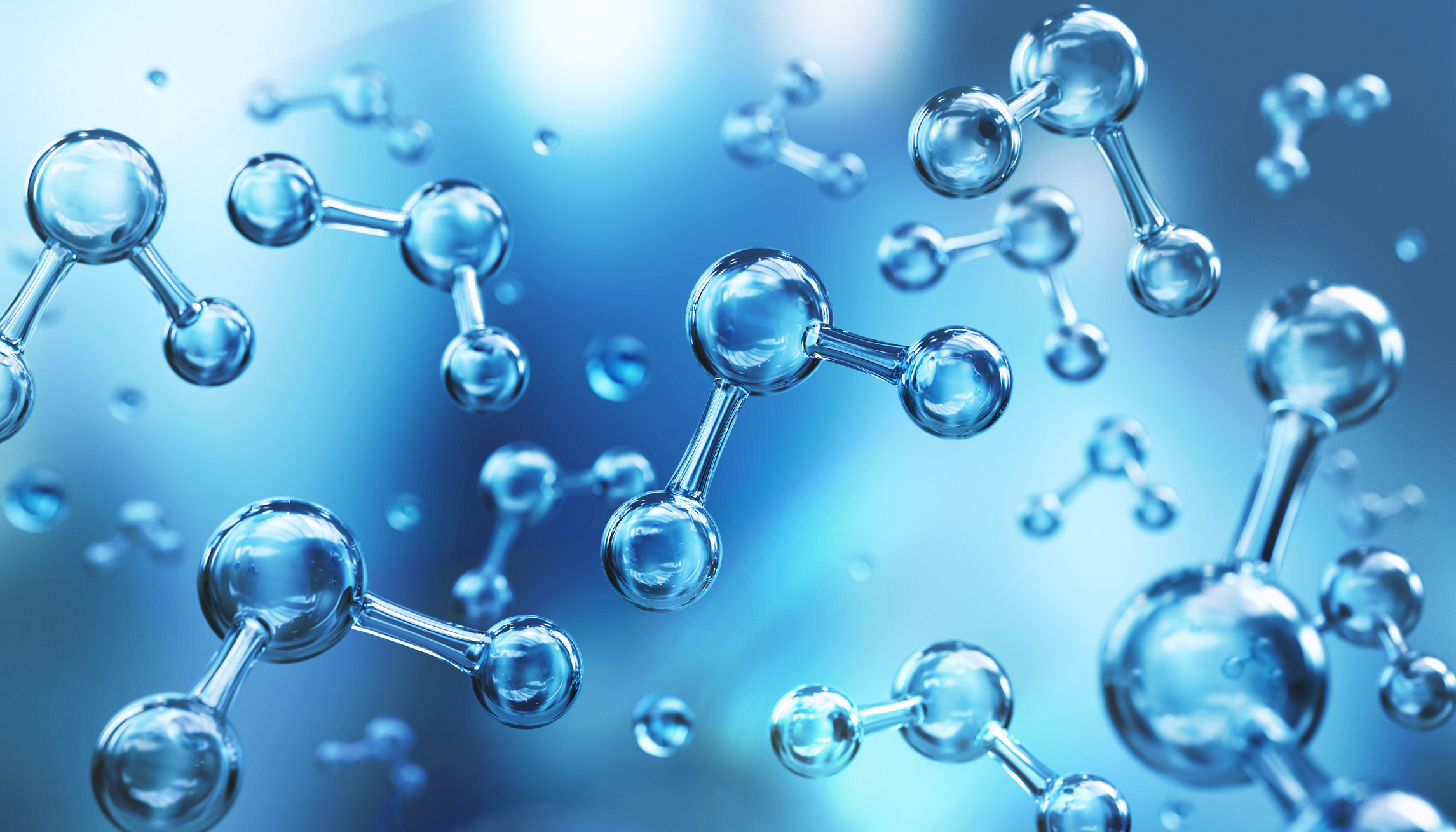Take a Dive Into the Science of Water

Let’s look at the science of water. This article is the second in the “Just Add Water” series inspired by Wallace J. Nichols, author of “Blue Mind” and founder of the Blue Mind movement
We all know water is H2O—two hydrogen atoms and one oxygen—but very few appreciate just how strange and magical the chemical is. Sometimes it’s even a struggle for science to explain water’s surprising properties. Let’s take a dive into some of those mysteries and what it means for those whose “Blue Minds” are driven to create a WaterSpace at home.
In his chapter, “The Senses, the Body, and ‘Big Blue,’” Blue Mind author Wallace J. Nichols quotes Charles Fishman’s observation about how water can lighten your mood. “A bright mountain stream makes you smile,” Fishman says. It “makes you feel better.”
The quote comes from the book, “The Big Thirst,” by Fishman. It’s the most accessible guide I’ve found to understanding water’s unusual chemical properties and appreciating its essential role in making life both possible and beautiful. Fishman’s book sets out to correct what he sees as widespread water ignorance. He takes the reader back billions of years into the earth’s history, and forward on a worldwide tour of today’s water uses and misuses.
The Science of Water Chemistry is Complicated and Weird
As I wrote here, when you bring a new pool or hot tub into your home, you have to become aware of the basic water chemistry that keeps it safe for people and prevents damage to your pool or spa. Even if you don’t have one at home, the article provides tips for judging whether it’s safe to get into that pool or spa at a resort, club or public facility.
Fishman’s book takes you even deeper into the weird science of water chemistry. “Water is a complicated, unusual, almost enchanted substance,” he writes; “not in the emotional or cultural sense, but literally, physically, starting right at the molecular level.”
Water inherits its odd character at this molecular level. It starts with hydrogen bonding creating an unusual level of “stickiness.” The stickiness enables water’s unique properties. There isn’t room here to include all the scientific observations Fishman provides in his book, but let me share a few examples:
• 32-212 Degrees of Life Support: “Water is a liquid through an incredibly wide range of temperature, Fishman says, “…and it is liquid over a range of temperatures hospitable to life.”
• Living things live thanks to liquid water: “Much of the chemistry and biology,” Fishman says, “…requires not just water, but liquid water.”
• Water regulates temperatures for life and earth: Fishman says, “stickiness allows water to absorb and hold heat,” making it an insulator that living things use to regulate their temperature. Water helps regulate the earth’s climate by allowing ocean temperatures to “vary just one-third as much as land temperatures.”
• Ice floats and life survives: Solid materials are supposed to be heavier than their liquid form. But water forms ice, “a crystal lattice that is 9 percent less dense than the same amount of liquid water.” Fishman explains how sticky hydrogen bonding lets ice float, another weird water property that makes the earth habitable.
• Water is a great solvent: In an article on keeping water balanced in your pool and spa, I noted how water wants to combine with just about anything it touches. Fishman tells us why: “almost anything will dissolve in water, in part because of its polar molecules.” He says the chemistry of our bodies—such as converting food to energy—depends on water’s super solvent ability. He adds, “Solvent qualities also mean water is easy to pollute, and that water is a great harbor of all kinds of things that make people sick, from germs to heavy metals.” Keeping water healthy helps keep living things healthy.
Scientists “go mystical” about water
This amazing chemistry that keeps water liquid, that lowers its density when it becomes ice, that makes water’s life-supporting properties possible, “are the kinds of qualities that cause even scientists who study water to go a little mystical on you,” Fishman says. It all “makes perfect molecular sense—if you’re a chemist or a physicist…. And yet nothing else in the regular world does that, and it is precisely that quality of water that enables life to go on living.”
What water is
Fishman worries that “we know nothing of the life of water—nothing of the life of the water inside us, around us, or beyond us. But it’s a great story—captivating and urgent, surprising and funny and haunting.” His chapter on “The Secret Life of Water”—from which this article provides a small sample—fills the reader to the brim with scientific knowledge of water.
But of course the chemistry is just a small part of the big water story. What does that magic chemistry mean for us now and for our future, and why is it important to understand water more fully? Before ending his chemistry lesson and moving on to a global tour of how we use water, Fishman offers these thoughts on what water is:
- “Water is transparent, and also reflects light.
- Water is soft and soothing, and also hard as concrete.
- Water is comforting, and also threatening; gentle, and fierce.
- Water is the source of life, and also often a source of death.
- Water is all-important, indispensable, but almost always free, or essentially free.
- Water is the most basic necessity to human life, and also a symbol of luxury and indulgence.
- Water is sexy and alluring, and also often appalling and repugnant.
- Water is as natural and wild as anything in the world—from white-water rapids and waterfalls to the power of hurricanes—and yet water is thoroughly domesticated in everyday life.
- Water is a team player—a partner in a cosmic gallery of natural events—and yet water has an independence of both body and spirit. It participates in all kinds of processes but emerges again as simply water.”
Up Next: The beauty of water and utility water
“We often keep the two kinds of water separate in our brains and in our day-to-day stewardship,” Fishman observes, “utility water and beautiful water.” There was a time when modern utility water was seen as a marvel of enlightened progress. In the next installment of “Just Add Water,” we’ll look at the leading role Philadelphia played in making safe drinking water a modern utility and how a bequest from Philadelphia’s most remarkable citizen made it possible.

